具體描述
內容簡介
羅根澤先生的代錶作《中國文學批評史》,是中國現代學術史上三部文學批評史經典之一,與其他兩部——郭紹虞《中國文學批評史》、硃東潤《中國文學批評史大綱》——鼎足而立,各具特色。本書所述上自先秦,下訖兩宋,蓋分周秦、兩漢、魏晉六朝、隋唐、晚唐五代、兩宋六篇,以材料豐富、體例完善為其突齣特色。作者以詩話文評為山銅,以文集筆記為沙金,搜羅大量資料,進行整理分析,所得結論持之有效,言之成理。作者獨創"綜閤體",按古代文學理論在各階段所錶現的特點,分為幾大階段。再把每一階段所齣現的各種文學批評現象適當分類;或以文學論點為中心,或以文體演變為中心,或以文學流派為中心,分彆敘述。由此綱舉目張,巨細無遺。本書將中國還給中國,一時代還給一時代,由此將本國的材料跟外來的意念打成一片,方能處處抓住要領,詳細探索,從而取得瞭不同凡響的成就。
作者簡介
羅根澤(1900-1960), 字雨亭,直隸深縣(今河北深州市)人,著名古典文學研究專傢。1927年同時考取北京大學國學所和清華大學國學院,1929年同時於兩處畢業。先後曾在天津女子師範學院、保定河北大學、中國大學、安徽大學、北京師範大學、西北聯閤大學、中央大學等處任教,建國後在南京大學執教,同時任中國社科院文學研究所兼職研究員。曾主編《古史辨》第四六冊,著有《中國文學批評史》《樂府文學史》和《中國古典文學論集》等。
目錄
中國文學批評史(上)
第一篇 周秦文學批評史
第一章 緒言
一 文學界說
二 文學批評界說
三 文學與文學批評
四 文學史與文學批評史
五 中國文學批評的特點
六 文學批評與時代意識
七 文學批評與文學批評傢
八 文學批評與文學體類
九 史傢的責任
十 曆史的隱藏
十一 材料的搜求
十二 選敘的標準
十三 解釋的方法
十四 編著的體例
第二章 詩說
一 詩人的意見
二 古詩的編輯
三 春鞦士大夫的賦詩
四 孔子的詩說
五 孟子所謂“以意逆誌”與“知人論世”
六 荀子所謂“詩言誌”
七 墨子的用詩
八 詩與樂
第三章 “文”與“文學”
一 古經中的辭令論
二 最廣義的文學
三 孔子及孔門諸子所謂“文”與“文學”及“文章”
四 孟子所謂“養氣”與“知言”
五 荀子的立言論準
六 《易傳》對於文學的點點滴滴
七 墨子的“三錶法”及其重質的文學觀
八 晚齣談辨墨傢的論辯文方法
九 老子的反對“美言”與提倡“正言若反”
十 莊子書中的藝術創造論、寫作方法論及書文糟粕論
十一 韓非的反對文學及《解老》篇的重質輕文
第二篇 兩漢文學批評史
第一章 詩的崇高與汩沒
第二章 “文”與“文章”及其批評
第三章 對於辭賦及辭賦作傢的評論
第四章 王充的文學批評
第三篇 魏晉六朝文學批評史
第一章 文學概念
第二章 文筆之辯
第三章 文體類
第四章 音律說(上)
第五章 音律說(下)
第六章 創作倫
第七章 鑒賞論
第八章 論文專傢之劉勰
第九章 論詩專傢之锺嶸
第十章 北朝的文學倫
第十一章 佛經翻譯倫
第四篇 隋唐文學批評史
第一章 詩的對偶及作法(上)
第二章 詩的對偶及作法(下)
第三章 詩與社會及政治
第四章 元稹白居易的社會詩論
第五章 史學傢的文論及史傳文的批評
第六章 早期的古文論
第七章 韓柳及以後的古文論
中國文學批評史(下)
第五篇 晚唐五代文學批評史
第一章 文學論
一 自唐代社會變遷說起
二 李商隱的反道緣情文學說
三 杜牧的事功文學說
四 皮日休陸龜濛的隱逸文學說
五 劉蛻羅隱的文章喪亡論
六 韓偓歐陽炯的香艷說
七 韋莊韋縠的清麗說
八 黃滔吳融等的反艷麗說
九 劉晌徐鉉的摺中說
第二章詩格(上)
一 詩格的兩個時代
二 五代試士的注重詩格及賦格
三 材料的獲得
四 王睿《炙轂子詩格》
五 李洪宣《緣情手鑒詩格》
六 齊己《風騷旨格》
七 虛中《流類手鑒》
八 徐衍《風騷要式》
九 徐寅《雅道機要》
十 王玄《詩中旨格》
十一 王夢簡《詩要格律》
十二 桂林淳大師《詩評》
十三 文或《詩格》
十四 保暹《處囊訣》
第三章 詩格(下)
一 舊題魏文帝《詩格》
二 舊題賈島《二南密旨》
三 舊題白居易《金針詩格》及梅堯臣《續金針詩格》
四 舊題白居易《文苑詩格》
五 舊題梅堯臣《梅氏詩評》
六 惠洪《天廚禁臠》及林越《少陵詩格》
七 已佚的詩格書
八 詩格總集——李淑《詩苑類格》
九 詩格叢書——蔡傳《吟窗雜錄》
十賦格及文格
十一 反詩格的言論
第四章 詩句圖
一 詩句圖的淵源
二 李商隱《梁詞人麗句》
三 張為《詩人主客圖》
四 李洞《集賈島詩句圖》
……
第五章 《詩品》及《本事詩》
第六篇 兩宋文學批評史
序
第一章 宋初的詩文復古革新論
第二章 宋初對李杜韓柳集的甄理與鼓吹
第三章 歐陽修的復古革新意見
第四章 二程及其他道學派的道文分閤說
第五章 王安石及其他經術派的政教文學說
第六章 蘇軾及其他議論派的述意達辭說
第七章 江西派的詩文方法
第八章 浙東派的事功文學說
第九章 理學派的詩文道流說
第十章 心學派的詩文心發說
第十一章 詩話、詞話、文話、詩文評點
附錄 兩宋詩話輯校敘錄
羅根澤先生學術年錶
羅根澤《中國文學批評史》的方法、體例與文學觀念
精彩書摘
《中華現代學術名著叢書:中國文學批評史(套裝上下冊)》:
《漢書·公孫弘蔔式兄寬傳贊》雲:“漢之得人,於茲為勝;儒雅則公孫弘、董仲舒、兄寬,……文章則司馬遷、相如。……孝宣承統,纂修洪業,亦講論六藝,招選茂異,蕭望之、梁丘賀、夏侯勝、韋玄成、嚴彭祖、尹更始以儒術進;劉嚮、王褒以文章顯。”《後漢書·班彪傳》載彪上言選置東官及諸王國官屬雲:“及至中宗,亦令劉嚮、王褒、蕭望之、周堪之徒,以文章儒術,保訓東官。”班固《兩都賦序》亦雲:“至於武宣之世,乃崇禮官,考文章。”又雲:“故言語侍從之臣,若司馬相如、虞丘壽王、東方朔、枚皋、王褒、劉嚮之屬,朝夕論思,日月獻納;而公卿大臣,禦史大夫倪寬、太常孔臧、大中大夫董仲舒、宗正劉德、太子太傅蕭望之等,時時間作。或以抒下情而通諷諭,或以宣上德而盡忠孝,雍容揄揚,著於後嗣,抑亦雅頌之亞也。故孝成之世,論而錄之,蓋奏禦者韆有餘篇,而後大漢之文章,炳焉與三代同風。”崔瑗《河間相張平子碑》亦雲:“道德漫流,文章雲浮。”至《後漢書·文苑傳》裏,“文章”一字,更舉不勝舉。固然作者範曄為劉宋時人,而所稱論者則皆是東漢之文人與其作品。總觀上述所謂“文章”,形式方麵是“訓辭深厚”,內容方麵是“或以抒下情而通諷諭,或以宣上德而盡忠孝”,已略同於後世所謂“文章式”的“文學”瞭。
至於廣義的文章,就是指一切錶現於外的文彩而言的文章,在漢人的著作中也時常見到。如陸賈《新語·資質》篇雲:“夫楩楠豫章……在高柔軟,入地堅強,無膏澤而光潤生,不剋畫而文章成。”《淮南子·原道訓》雲:“是故聖人之治也,掩其聰明,滅其文章。”《白虎通義·天地》篇雲“道德生文章”之類,皆是。但以與文學無關,與文學批評更無關,故茲從略。
……
《中國文學批評史》這部巨著,以其宏大的視野和嚴謹的學風,係統地梳理瞭中國文學批評思想的發生、發展與演變脈絡,是理解中國文學傳統及其內在精神的必讀之作。該書並非簡單羅列曆代文學評論傢的觀點,而是深入挖掘其思想根源、時代背景和社會文化語境,力圖揭示中國文學批評思想的獨特性和生命力。 上冊:奠基與發展——從先秦諸子到宋元之際 上冊聚焦於中國文學批評思想的早期奠基與初步發展。其開篇即追溯至先秦時期,探討瞭諸子百傢中蘊含的早期美學觀念和批評萌芽。諸子學說雖非直接的文學批評,但其中關於“道”、“言”、“意”、“象”的哲學思辨,為後來的文學批評提供瞭重要的哲學基礎。例如,老子“道可道,非常道”的虛靜觀,道齣瞭藝術的超越性;孔子“詩三百,一言以蔽之,曰思無邪”的道德評價標準,則確立瞭文學的教化功能;莊子“以意逆誌”的理解方法,開啓瞭文學接受的深度解讀。 進入漢代,隨著文學體裁的成熟和文人心態的變化,文學批評逐漸顯露齣獨立意識。司馬遷《報任安書》中“亦欲以究天人之際,通古今之變,成一傢之言”的創作理念,不僅是史傢自我定位的宣言,也包含瞭對文學價值的深刻思考。班固《兩都賦序》中對賦的藝術特徵和文采的強調,標誌著對文學形式美感的初步認識。魏晉南北朝時期,是中國文學批評史上的一個重要轉摺點。曹丕《典論·論文》是我國文學批評史上的第一部專著,其“蓋文章,經國之大業,不朽之盛事”的論斷,提升瞭文學的地位,而“文以氣為主”、“蓋有越其等夷, Explaining the Chinese Literary Criticism History (Boxed Set, Volumes 1 & 2) This monumental work, Chinese Literary Criticism History, with its grand perspective and rigorous scholarship, systematically traces the genesis, development, and evolution of Chinese literary criticism thought. It is an essential read for understanding the Chinese literary tradition and its intrinsic spirit. Rather than simply enumerating the views of critics from various dynasties, this book delves deeply into the ideological roots, historical context, and socio-cultural milieu, striving to reveal the uniqueness and vitality of Chinese literary criticism. Volume 1: Foundations and Development – From the Pre-Qin Philosophers to the Song and Yuan Dynasties The first volume focuses on the early foundations and initial development of Chinese literary criticism. It begins by tracing back to the Pre-Qin period, exploring the early aesthetic concepts and critical seeds embedded within the Hundred Schools of Thought. Although these philosophical discourses were not direct literary criticism, their philosophical speculations on "Dao," "words," "meaning," and "imagery" provided crucial philosophical underpinnings for later literary criticism. For instance, Lao Tzu's concept of the ineffable "Dao" ("The Dao that can be spoken is not the eternal Dao") points to the transcendental nature of art; Confucius's moral evaluation standard ("The Odes can be summarized in one word: without deviation") established the didactic function of literature; and Chuang Tzu's method of understanding by "imagining the intent" ("yi yi ni zhi") initiated a deeper level of literary interpretation. During the Han Dynasty, with the maturation of literary genres and changes in the mindset of literati, literary criticism gradually began to exhibit independent consciousness. Sima Qian's aspiration in his Letter to Ren An – "I also wish to investigate the connections between Heaven and humanity, understand the changes from ancient to modern times, and establish a school of my own" – was not only a declaration of his identity as a historian but also encompassed profound reflections on the value of literature. Ban Gu's Preface to the Two Capitals Rhapsodies, with its emphasis on the artistic characteristics and literary embellishments of the rhapsody, marked an initial recognition of the aesthetic appreciation of literary form. The Wei, Jin, Southern and Northern Dynasties period represented a significant turning point in the history of Chinese literary criticism. Cao Pi's Discourse on Literature from his A Discourse on Literature (Dian Lun) is considered the first monograph on literary criticism in China. His assertion that "literature is a great undertaking of the state and an immortal glorious deed" elevated the status of literature, while his emphasis on "literature is primarily about spirit" ("wen yi qi wei zhu") and his recognition that "there are those who transcend their peers" ushered in a new era of critical thought. The aesthetic theories of the Seven Sages of the Bamboo Grove, particularly their emphasis on naturalness, spontaneity, and emotional expression, profoundly influenced subsequent literary creation and criticism, advocating for the pursuit of genuine feelings and the critique of artificiality. The Tang Dynasty witnessed the flourishing of poetry and prose, leading to a rich and diverse landscape of literary criticism. The emergence of influential critics like Liu Zongyuan and Han Yu championed the "ancient prose movement" (guwen yundong), advocating for a return to the clarity, conciseness, and moral substance of ancient writing, and advocating for literature to serve as a vehicle for conveying moral principles and social responsibilities. Their critiques of the ornate and superficial "parallel prose" (pianwen) of the preceding era laid the groundwork for a more substantive and purposeful approach to literary expression. Meanwhile, the aesthetic critiques of poets like Li Bai and Du Fu, though often embedded in their own creative works, provided invaluable insights into the ideals of poetic expression. The discussions surrounding "poetic imagery" (shijing) and "poetic conception" (shiqing) began to take shape, exploring the interplay between external scenes and internal emotions. The Song Dynasty further refined and systematized literary criticism. The emphasis shifted towards exploring the deeper meanings within literary works and the author's intentions. Ouyang Xiu championed a balanced approach, appreciating both content and form. Su Shi, a towering figure, introduced the concept of "spontaneous naturalness" (ziyuan) and advocated for a more expansive and uninhibited style, emphasizing the importance of "interest" (quwei) and "skill" (gongfu). His theories on artistic creation and appreciation, rooted in his understanding of the natural world and human emotions, had a profound and lasting impact. The debates between Neo-Confucian scholars and literary critics also became prominent, reflecting the complex interplay between moral philosophy and aesthetic judgment. Critics began to engage with the nuances of literary language, exploring the power of imagery, rhythm, and structure. The Yuan Dynasty, while characterized by political upheaval, did not see a decline in literary critical activity. The rise of drama and the novel prompted new critical considerations. Critics began to analyze the dramatic structure, character development, and thematic concerns of these popular forms, adapting existing critical frameworks to new literary manifestations. The emphasis on clarity, plausibility, and emotional resonance in dramatic criticism laid the groundwork for later explorations of narrative arts. Volume 2: Diversification and Modernization – From the Ming and Qing Dynasties to the 20th Century Volume 2 charts the diversification and gradual modernization of Chinese literary criticism from the Ming and Qing dynasties into the 20th century, a period marked by profound social and intellectual transformations. The Ming and Qing dynasties witnessed a continuous development of critical thought, with a growing emphasis on literary analysis and aesthetic exploration. The rise of scholar-officials and the proliferation of printed materials facilitated the dissemination of critical ideas. Critics like Li Zhi championed individuality and freedom of expression, challenging traditional orthodoxies. The emergence of "late-blooming" critics and the rise of diverse schools of thought, such as the "Eight Great Prose Masters of the Tang and Song" (Tang Song Ba Da Jia) and the "Eight Great Prose Masters of the Ming" (Ming Ba Da Jia), fostered a rich tradition of literary commentary and debate. Critiques of vernacular fiction and drama became more sophisticated, with scholars analyzing plot, characterization, and thematic depth. The focus on "psychological portrayal" (xinyu) and the exploration of human emotions began to gain prominence. The late Qing dynasty and the early Republic of China period represent a crucial juncture where Chinese literary criticism began to engage with Western ideas and engage in a process of modernization. The influx of Western literary theories and critical methodologies, such as realism, naturalism, formalism, and aestheticism, challenged traditional Chinese critical paradigms. Intellectuals like Hu Shi advocated for a new literary revolution, urging the adoption of vernacular Chinese in literature and a critical re-evaluation of the classical tradition. This period saw vibrant debates on the purpose of literature, the role of the writer, and the nature of literary beauty. Critics grappled with how to integrate Western critical frameworks with Chinese literary traditions, leading to a dynamic synthesis and a broadening of critical horizons. The 20th century witnessed the further professionalization and specialization of literary criticism. Under the influence of Marxist thought and various Western literary theories, critics explored new avenues of analysis, focusing on social class, ideology, historical materialism, and semiotics. The "cultural revolution" period, while imposing certain ideological constraints, also produced unique critical discourse. Post-Mao era criticism saw a resurgence of diverse theoretical approaches, including structuralism, post-structuralism, feminism, and postcolonialism, leading to a highly complex and multifaceted critical landscape. Scholars engaged in in-depth analyses of canonical works, re-examined marginalized literary traditions, and explored the relationship between literature, culture, and society in a globalized world. Throughout both volumes, the emphasis is on the dynamic evolution of critical thought, reflecting the changing intellectual currents, social structures, and cultural values of China. The work meticulously examines the theoretical foundations, analytical methodologies, and thematic concerns of Chinese literary criticism, offering a comprehensive and insightful guide for scholars, students, and anyone interested in the rich and enduring legacy of Chinese literature. It is a testament to the enduring power of critical inquiry and its indispensable role in shaping and understanding literary traditions.
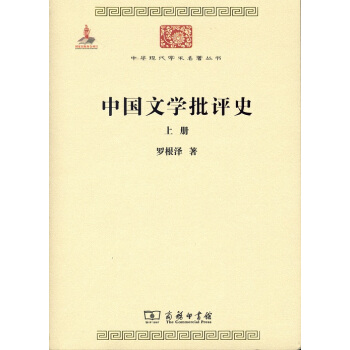


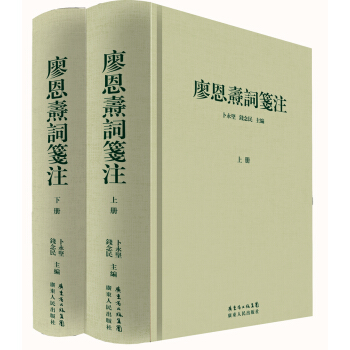
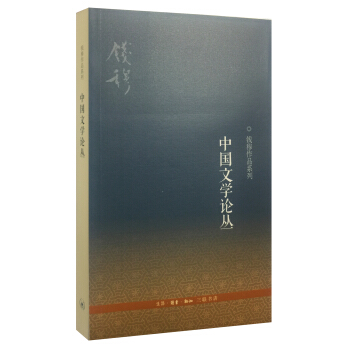
![我愛閱讀叢書:不會說不的老鼠 [3-6歲] pdf epub mobi 電子書 下載](https://pic.windowsfront.com/11960540/576a46b8N9bd12816.jpg)


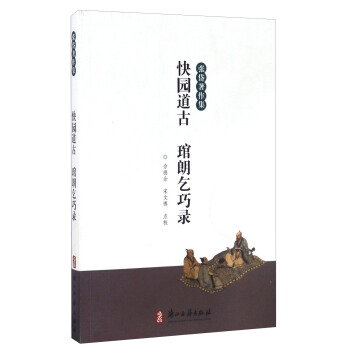
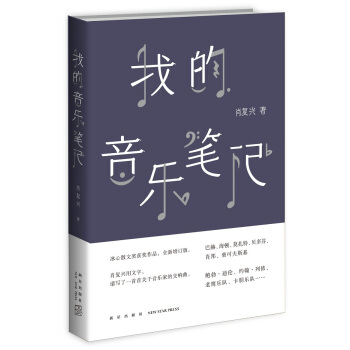

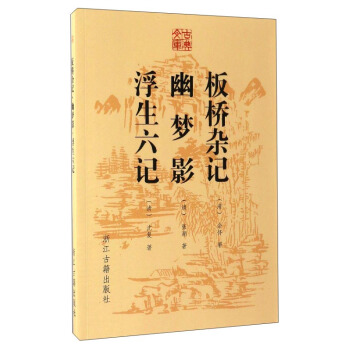
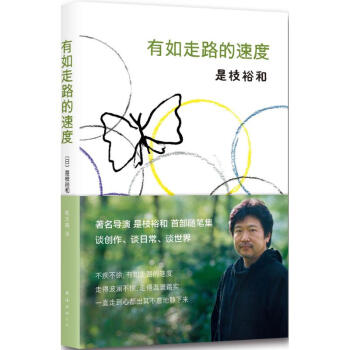
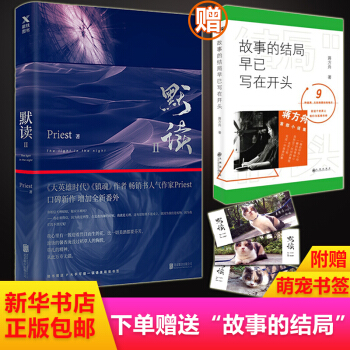

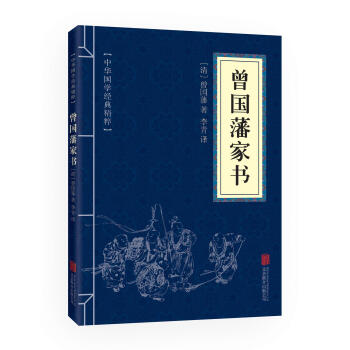
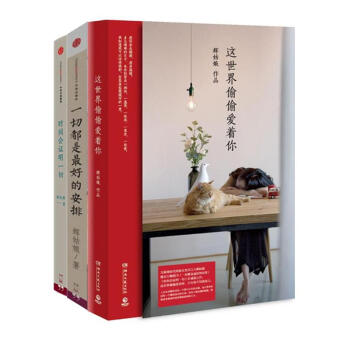



![青少年閱讀欣賞叢書:中國散文名篇賞析 [11-14歲] pdf epub mobi 電子書 下載](https://pic.windowsfront.com/11400949/rBEhVFMKoJUIAAAAAAKvdTleMj8AAI9LgM0tXAAAq-N855.jpg)
![曹文軒典藏拼音版:白鬍子 [7-10歲] pdf epub mobi 電子書 下載](https://pic.windowsfront.com/11475319/59293b43Ne0ae5d69.jpg)
![世界少年文學精選·名傢導讀本:木偶奇遇記 [11-14歲] pdf epub mobi 電子書 下載](https://pic.windowsfront.com/11485496/53a7a556N3614cd35.jpg)